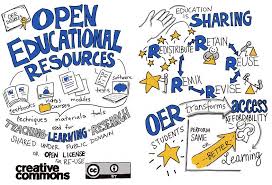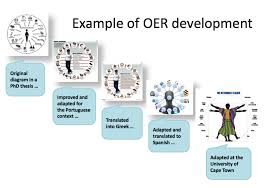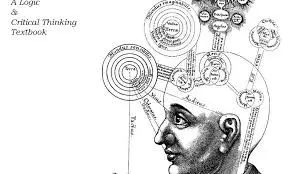Education has always been the key to unlocking opportunities, but how we access it has dramatically evolved. Today, Open Educational Resources (OERs) are reshaping the educational landscape by breaking down barriers and making learning accessible to everyone, everywhere. But what exactly are OERs, and how are they changing the game? Let’s dive into this revolutionary concept that’s making education open, equitable, and future-ready.
What Are Open Educational Resources (OERs)?

Open Educational Resources are free, openly licensed materials used for teaching, learning, and research. They can include textbooks, videos, lesson plans, and even entire courses. The magic of OERs lies in their accessibility—they’re available to anyone with an internet connection, removing the financial and geographical constraints of traditional education.
Why Are OERs Important?
Imagine a world where knowledge is no longer a luxury but a right. OERs aim to make this vision a reality by democratizing education. They empower learners, educators, and institutions to collaborate, innovate, and share knowledge without the typical restrictions of copyright laws or expensive resources.
Also Read; The Hidden Dangers of Artificial Intelligence: Job Displacement and Existential Risks
The Core Principles of OERs
1. Accessibility
OERs ensure that learning materials are accessible to everyone, regardless of socioeconomic status.
2. Affordability
With OERs, students and educators can access high-quality resources without worrying about hefty costs.
3. Adaptability
Because OERs are openly licensed, they can be modified, remixed, and tailored to suit diverse learning needs.
The Evolution of Open Education

1. Early Beginnings
The concept of open education isn’t new. It began with the open-source software movement in the 1980s, which later inspired educational initiatives.
2. Rise of MOOCs
Massive Open Online Courses (MOOCs) like Coursera and edX popularized the idea of free online learning, paving the way for OERs.
3. Global Adoption
Today, governments, NGOs, and educational institutions worldwide are investing in OERs to promote lifelong learning and close educational gaps.
How OERs Are Revolutionizing Education
1. Breaking Down Barriers
For students in underserved communities, OERs provide opportunities that were once out of reach. With just a smartphone, they can access world-class resources.
2. Promoting Collaboration
OERs encourage a culture of sharing and collaboration among educators. Teachers can adapt resources, exchange ideas, and build a global learning community.
3. Enhancing Lifelong Learning
OERs aren’t just for formal education. They empower individuals to pursue personal and professional development at their own pace.
Types of Open Educational Resources
1. Open Textbooks
Free, high-quality textbooks that can be downloaded, edited, and shared.
2. Multimedia Content
Videos, animations, and podcasts that make learning engaging and interactive.
3. Lesson Plans and Courseware
Ready-to-use teaching materials that educators can customize to their curriculum.
4. Open Access Journals
Scholarly articles and research papers available to the public without subscription fees.
Benefits of Open Educational Resources
1. Cost Savings
For students, OERs eliminate the need to spend hundreds—or even thousands—on textbooks and materials.
2. Flexibility and Customization
Teachers can modify OERs to fit their students’ needs, ensuring a more personalized learning experience.
3. Promotes Equity
By providing free resources, OERs level the playing field, giving all learners an equal chance to succeed.
4. Encourages Innovation
The open nature of OERs inspires educators to experiment and innovate, creating more engaging and effective teaching methods.
Challenges Facing OERs
1. Quality Concerns
Not all OERs are created equal. Ensuring high-quality content can be a challenge.
2. Lack of Awareness
Many educators and institutions are still unaware of the potential of OERs.
3. Technical Barriers
Accessing and using OERs requires digital literacy and reliable internet, which are not universally available.
4. Sustainability Issues
Maintaining and updating OERs requires funding and collaborative efforts, which can be difficult to sustain.
The Role of Technology in OERs
1. Artificial Intelligence (AI)
AI is used to curate personalized learning pathways using OERs, ensuring learners get resources tailored to their needs.
2. Blockchain for Credibility
Blockchain technology can be used to verify the authenticity of OERs and track their usage.
3. Mobile Accessibility
With the proliferation of smartphones, OERs are increasingly optimized for mobile devices, making learning on the go a reality.
Examples of OER Initiatives
1. Khan Academy
A free platform offering video tutorials and practice exercises on various subjects.
2. MIT OpenCourseWare
MIT shares its course materials for free, allowing anyone to access high-quality content.
3. OpenStax
A nonprofit initiative providing free, peer-reviewed textbooks for students worldwide.
4. UNESCO OER Platform
UNESCO supports global collaboration and provides access to diverse open educational resources.
How Educators Can Embrace OERs
1. Explore OER Repositories
Platforms like OER Commons and MERLOT offer a treasure trove of resources for educators.
2. Customize and Collaborate
Don’t just use OERs—adapt and share them! Collaboration is at the heart of open education.
3. Advocate for OERs
Raise awareness about the benefits of OERs within your institution or community.
4. Invest in Training
Teachers should be trained to use and create OERs effectively to maximize their potential.
OERs in the Global Context
1. Bridging the Digital Divide
In developing countries, OERs provide access to education where resources are scarce.
2. Multilingual Resources
OERs are increasingly being translated into multiple languages to cater to diverse learners.
3. Supporting Refugees
For displaced individuals, OERs offer a chance to continue their education despite challenging circumstances.
The Future of OERs
1. Integration with AI and VR
Imagine using virtual reality to explore historical events or practice complex skills—all powered by OERs.
2. Expanding Inclusivity
The future of OERs lies in creating resources that are accessible to learners with disabilities and diverse cultural backgrounds.
3. Strengthening Policies
Governments and institutions need to adopt policies that promote and fund the development of OERs.
Conclusion
The future of education is undoubtedly open. By embracing Open Educational Resources, we can create a world where learning is accessible, equitable, and limitless. OERs aren’t just a trend—they’re a movement that’s transforming how we think about education. So, whether you’re a student, teacher, or lifelong learner, it’s time to join the open education revolution. The possibilities are endless, and the future is brighter than ever.
FAQs
1. What are Open Educational Resources (OERs)?
OERs are free, openly licensed educational materials that anyone can use, modify, and share, including textbooks, videos, and courseware.
2. How do OERs benefit students?
OERs save students money, provide flexible learning options, and ensure equitable access to high-quality educational resources.
3. Are OERs only for formal education?
Not at all! OERs are also great for personal and professional development, making them ideal for lifelong learners.
4. What challenges do OERs face?
Common challenges include quality assurance, lack of awareness, digital access barriers, and sustainability concerns.
5. How can I start using OERs?
You can explore repositories like OER Commons, OpenStax, and MIT OpenCourseWare to find resources that fit your needs.
Also Read; Tricks to Enable Playing High-end Games on a Low-end PC


